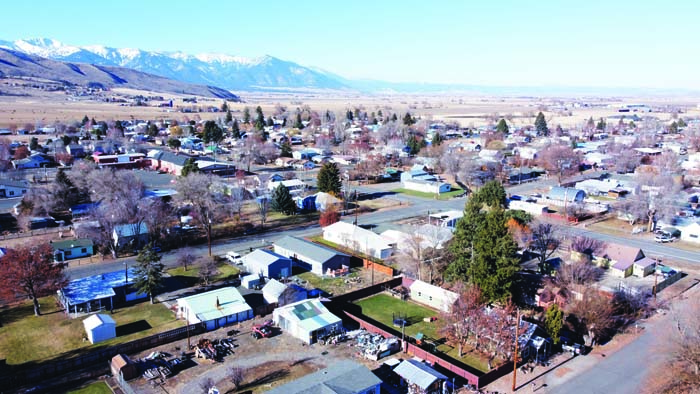Housing crunch means vouchers less useful
Published 12:45 pm Friday, September 9, 2022

- Appraisers from the Baker County Assessor's Office are appraising real market values of residential properties in Baker City. (Jayson Jacoby/Baker City Herald, File)
Baker County’s lack of affordable housing means most of those who receive government-subsidized housing vouchers aren’t able to use them, according to staff at the Northeast Oregon Housing Authority (NEOHA).
“We have a shortage of affordable housing,” said Desiree Myers-Nallusamy, housing manager for the Housing Authority. “A lot of the rents in our areas are much higher than what HUD allots for a house, apartment or duplex.”
HUD is the US Department of Housing and Urban Development, which administers money to local Public Housing Authorities — like NEOHA — for Housing Choice Vouchers each year. The local authorities then pull names from a waiting list of applicants and inform them they’re eligible to receive a voucher.
According to a HUD website, the Housing Choice Voucher (HCV) program, otherwise known as Section 8, is the federal government’s “primary program for assisting low-income families, the elderly and persons with disabilities to afford decent, safe and sanitary housing in the private market.”
To qualify, a tenant’s income has to be below a certain threshold — half the amount of the county’s average income. And, by law, NEOHA awards about three-quarters of its vouchers to those with incomes one-third of the county average or below.
About 45% of Baker City households qualify for the program, according to a housing needs analysis from 2020.
NEOHA, which serves Baker, Union, Wallowa and Grant counties, pulled 131 names from the Baker County list from July 2021 to June 2022. But because the list is long — sometimes the wait can extend for several years — many people don’t respond after they are contacted.
But that’s not the reason most vouchers didn’t get used, Myers-Nallusamy said. NEOHA still awarded 23 vouchers during that time period, which meant those recipients could look for a place where they’d like to live.
In general, through the HCV program, the tenant provides 30% of their income to rent and the voucher supplies the rest, which the local authority pays to the landlord.
But that ratio only applies if the chosen property fits within the “payment standard” — the usual price to rent a moderately-priced housing unit in the local market, as determined by the local authority.
The amount is usually based on the local Fair Market Rent price, which in 2022 is $856 for a two-bedroom unit, according to Oregon Housing and Community Services. Tenants can still choose properties that exceed the payment standard, but the extra money has to come from their own pocket.
(The Fair Market Rent will increase by 4% in Baker County starting Oct. 1, 2022. The increases are 7% in Wallowa County, and 8% in Union County, according to HUD.)
Most rents in Baker County exceed the payment standard for the HCV program, Myers-Nallusamy said.
“The rents are so much higher that they don’t fall within our guidelines to be able to issue payments,” she said.
Even if the tenant chooses to contribute more than 30% of their income to rent, the program doesn’t allow them to contribute more than 40%.
And units that do fit the payment standard were few and far between, Myers-Nallusamy said. Out of the 23 who received vouchers, just five could find and lease housing. The other 18 vouchers expired.
“Affordable housing is not available, and there’s nothing really,” Myers-Nallusamy said.
According to a 2021 assessment from the Oregon Housing Alliance, for every 100 families with extremely low income in Baker County, only 37 units are available.
One in five renters are paying more than 50% of their income to rent.
Thera Pallis, housing navigator for NEOHA, said landlords converting properties to short-term vacation rentals has contributed to the thinning market and higher rents.
Pallis said she sometimes has to look elsewhere in the region in hopes to fill the vouchers since they are transferable to other counties.
“If I work with any clients in Baker, I’m always saying ‘Are you willing to relocate if there’s no success in Baker County, would you be willing to go to the other counties?’ Some are willing, and then there’s those who cannot because of their jobs,” Pallis said.
“It’s hard, because our job is to get people housed, and how do you do that in an area where there’s just not enough housing,” she said.
As part of the Baker County Behavioral Health Housing Task Force, Pallis shared the information with nonprofit New Directions as part of a recent survey and report it conducted, which aimed to identify gaps in housing services for those with behavioral health conditions in Baker County.
New Directions recently received a $1.4 million state grant, money it will use to purchase a modular home, two other homes in the community, and to set up a housing service center.







